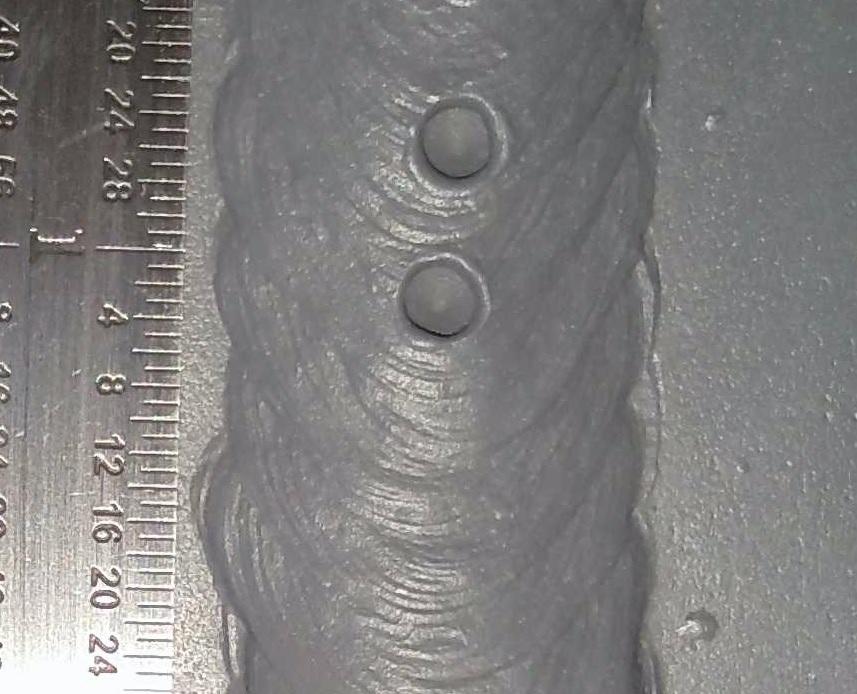What is Porosity in Welding: Finest Practices for Avoiding Permeable Welds
The Scientific Research Behind Porosity: A Comprehensive Guide for Welders and Fabricators
Comprehending the intricate systems behind porosity in welding is crucial for welders and makers striving for impressive craftsmanship. As metalworkers explore the midsts of this sensation, they uncover a globe regulated by various elements that influence the development of these minuscule gaps within welds. From the make-up of the base materials to the details of the welding procedure itself, a plethora of variables conspire to either worsen or ease the presence of porosity. In this thorough guide, we will certainly decipher the scientific research behind porosity, exploring its results on weld high quality and introduction advanced strategies for its control. Join us on this journey via the microcosm of welding imperfections, where accuracy meets understanding in the quest of remarkable welds.
Comprehending Porosity in Welding
FIRST SENTENCE:
Evaluation of porosity in welding discloses critical understandings right into the stability and high quality of the weld joint. Porosity, identified by the visibility of dental caries or spaces within the weld metal, is a typical issue in welding processes. These voids, otherwise appropriately attended to, can endanger the structural stability and mechanical homes of the weld, resulting in potential failings in the completed product.

To discover and measure porosity, non-destructive testing methods such as ultrasonic screening or X-ray assessment are commonly utilized. These techniques enable the recognition of internal problems without compromising the honesty of the weld. By examining the size, shape, and circulation of porosity within a weld, welders can make enlightened decisions to improve their welding procedures and accomplish sounder weld joints.

Elements Influencing Porosity Development
The occurrence of porosity in welding is influenced by a myriad of aspects, ranging from gas shielding efficiency to the intricacies of welding parameter setups. Welding criteria, consisting of voltage, current, take a trip speed, and electrode type, likewise effect porosity development. The welding strategy employed, such as gas metal arc welding (GMAW) or protected steel arc welding (SMAW), can affect porosity development due to variations in heat distribution and gas insurance read this coverage - What is Porosity.
Results of Porosity on Weld Quality
The existence of porosity additionally deteriorates the weld's resistance to corrosion, as the entraped air or gases within the spaces can react with the surrounding setting, leading to deterioration over time. In addition, porosity can impede the weld's ability to endure pressure or influence, additional jeopardizing the total high quality and reliability of the bonded structure. In critical applications such as aerospace, auto, or structural constructions, where security and sturdiness are paramount, the damaging effects of porosity on weld top quality can have serious effects, highlighting the importance of lessening porosity through appropriate welding strategies and procedures.
Strategies to Reduce Porosity
To boost the quality of bonded joints and guarantee architectural get more integrity, welders and producers employ certain strategies focused on lowering the formation of spaces and cavities within the material throughout the welding procedure. One effective technique to decrease porosity is to ensure proper material prep work. This includes extensive cleansing of the base metal to eliminate any kind of contaminants such as oil, grease, or dampness that could add to porosity formation. Furthermore, using the proper welding parameters, such as the appropriate voltage, present, and take a trip speed, is important in protecting against porosity. Maintaining a constant arc length and angle during welding likewise helps in reducing the probability of porosity.

Using the proper welding method, such as back-stepping or employing a weaving activity, can additionally assist distribute warmth uniformly and decrease the chances of porosity development. By implementing these strategies, welders can successfully reduce porosity and generate premium bonded joints.

Advanced Solutions for Porosity Control
Executing sophisticated technologies and ingenious methods plays a critical duty in achieving remarkable control over news porosity in welding procedures. Additionally, utilizing innovative welding techniques such as pulsed MIG welding or customized environment welding can additionally help reduce porosity concerns.
Another advanced service entails the usage of advanced welding devices. For example, making use of tools with built-in features like waveform control and sophisticated power resources can boost weld top quality and reduce porosity threats. Additionally, the implementation of automated welding systems with specific control over specifications can significantly reduce porosity issues.
Additionally, integrating innovative surveillance and evaluation innovations such as real-time X-ray imaging or automated ultrasonic testing can aid in discovering porosity early in the welding process, enabling instant corrective actions. In general, integrating these sophisticated options can substantially improve porosity control and enhance the overall quality of welded elements.
Conclusion
In verdict, comprehending the science behind porosity in welding is vital for welders and fabricators to produce high-grade welds. By recognizing the factors affecting porosity development and implementing techniques to minimize it, welders can improve the overall weld quality. Advanced solutions for porosity control can further enhance the welding procedure and make certain a solid and reliable weld. It is very important for welders to continually enlighten themselves on porosity and apply ideal techniques to achieve optimum outcomes.